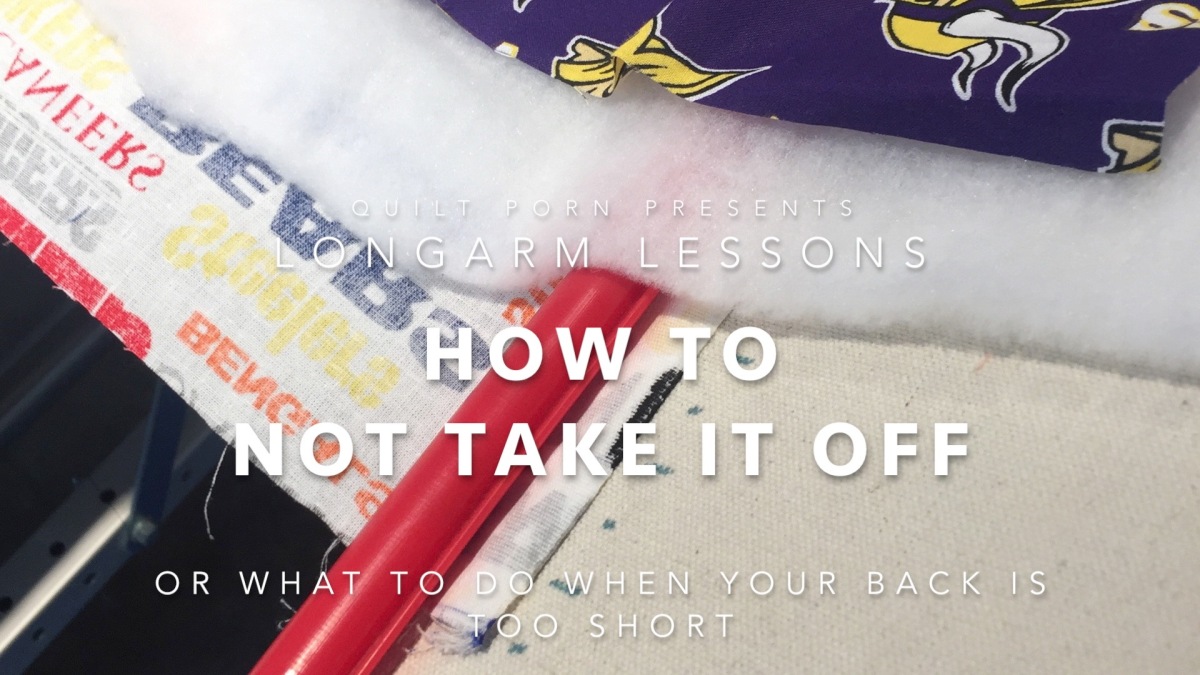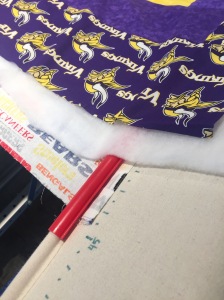Note: this needs editing
Your goal is to choose a needle that will make a hole for long enough time and also smooth enough that the thread will slide smoothly through the hole in the fabric. The hole shouldn’t be too big to appear permanent and shouldn’t be too small to cause problems, or compromise the strength of the fabric. The needle shouldn’t damage the fabric or the thread.
Here is a sequence of questions to ask yourself when choosing a needle.
- What kind of fabric? Woven or stretchy?
- What thread am I going to use?
- What is the fabric like in detail?
- What kind of sewing am I doing?
The Nitty Gritty Answers
Questions 1 and 2 is where you start. Questions 3 and 4 will fine tune to arrive at the best needle choice.
1. The kind of fabric will determine if you need a sharp or rounded needle point. Is the fabric woven or stretchy or knitted?
A. Woven? Is it tightly or loosely woven?
Tight or dense? choose a sharply pointed needle such as topstitch, microtex, universal because You want the needle to penetrate and damage as few fibers as possible. The fibers in a dense weave cannot move out of the way. So, sharper is better for this type of fabric.
Loose woven needs a ball or semi ball point, Because you want to push the fibers aside when it moves through the fabric.
Tight weaves don’t mix well with ball or blunt dull needles. The force of a blunt or ball point striking a dense weave will tear through the fibers and actually rip and pull them in the process, resulting in uneven, irregular holes and damage to the fabric. (Blunt can be a worn out old needle too.)
B. Stretchy, elastic or knitted fabric? All these types of fabric are loose. Choose a ballpoint needle , jersey or stretch needle . You want the needle to move through the fabric pushing away the elastic fibers not cutting though them.
2. What thread are you wanting to use? This will help determine approximately what eyehole type and size to use. The lighter or thinner the thread that is being sewn, the smaller the needle should be. You don’t want a big fat thick needle leaving a big hole behind. Conversely, you don’t want a hole that is too small and the thread runs and wears out , maybe shredding or breaking as it passes through the hole because it’s rubbing on the fabric.
2A. Is it heavy or lightweight thread?
In general, these size needles go with these size threads.
120/19 – some kinds of industrial threads
110/18 – 12 wt thread
100/16 – 30 wt thread , maybe 12 wt
90/14 – 40 wt thread
80/12 – 50 wt thread
75/11 – 50 wt thread
60/10 – 60 wt thread
65/9 – 100 wt thread
2. B. Is your thread strong or weak?
cotton or trilobal polyester? Universal, denim, topstitch or microtex
Weak like an embroidery rayon type of thread? Then choose an embroidery needle or needle with a deeper groove like microtex. The deeper groove will protect the thread from rubbing on the fabric. Don’t have an embroidery needle try go up one size as if the thread were heavier than it is.
2.c is your thread metallic? Use a metallic or microtex needle. Also if having problem lubricate the thread on the spool w thread ease or sewing machine oil. some sewing machines have an add on for lubricating your thread after it comes off the spool. Metallic thread wear out needles faster. I suggest a titanium coated needle especially when sewing with metallic thread.
3. What is the fabric like that you will sew on? In general, the lighter or thinner the fabric that is being sewn, the smaller the needle should be.
Is it tightly woven or very dense or very heavy? Go up a needle size OR choose a needle type with a larger groove or eye hole such as a top stitch or microtex or embroidery.
4. What type of sewing are you doing? Embroidery with its usually weaker thread and lots of densely packed stitches is helped by using an embroidery needle wish has a deep groove to protect the thread.
Are you sewing a lot of layers? Or just piecing two layers? Lots of layers might need a size up.
5. How old is the needle you are using?
A general rule of thumb is to change a needle every 8 hours or at the beginning of every project. BUT! The fabric will tell you when to change the needle by making a “pok-pok” sound. As the wear gets worse, the sound will become louder. I find on my long arm, a needle starts making the pok pok sound at about two or three hours. The sound occurs when fibers are being punched and torn.
Microtex needles make beautiful stitches but because they have very pointed long “noses” that are more easily damaged they must be changed more often. Note: this is my favorite needle type. I use the titanium coated ones in order to get more life from them.
Other needle options:
An interesting needle to try for free motion is the schmetz spring needle. It replaces the need for a specialized free motion foot. And so clears the area to more easily see your work. It also come varieties for different types of fabric such as topstitch, ballpoint, stretch, denim, quilting.
Remember in the scheme of things needles are cheap! Change them often! Needles are specialized for different combinations of thread, fabric, and job. The wrong needle will cause shredding, breakage, and frustration.
Other questions
My thread spool says use a diff size needle… use what they recommend. Example Superior Thread microquilter says use a #14 or #16 needle. It is 100 wt thread and works great with those size needles! Normally 100 wt threads use a thinner needle. But Superior microquilter is super strong and is designed for using with the larger needle size. But, 100 wt silk thread on the other hand sews better for me with a thinner needle like a #10 or #9.
What do the needle numbers mean?
Needles usually are denoted by two numbers. The bigger number is the diameter of the needle in 1/100’s of a millimeter. The smaller number is an arbitrary U.S. notation. In general the smaller the number the thinner the needle.
If you use a #75/11 or #80/12 size needle for 50 weight thread, you should use a needle with a larger eye when sewing with a heavier thread. I recommend a size #90/14 when sewing with a 40 wt. thread and a #100/16 needle when sewing with a 30 wt or 12 wt. thread.
Is your thread shredding or skipping stitches?
First try a new needle, old needles can get burrs or sharp areas. Second, check your threading path (rethread), third, check your tension if you changed thread thickness, your tensions will be different. Also check the quilt top tension between the leader bars, too taite will cause this problem if on a longarm, fourth, try a new needle and go up one size. Check your needle plate for burrs.
Titanium Needles?
Yes!!! https://freeformquilts.com/2014/11/25/titanium-needles-are-not-too-expensive/




 Always check the sizes of fabric, always! Even when a the charity coordinator says it is all measured and ready. Even when the first three quilt tops and backs you did were correctly sized for longarming. Always check! Grrrrr!
Always check the sizes of fabric, always! Even when a the charity coordinator says it is all measured and ready. Even when the first three quilt tops and backs you did were correctly sized for longarming. Always check! Grrrrr!










